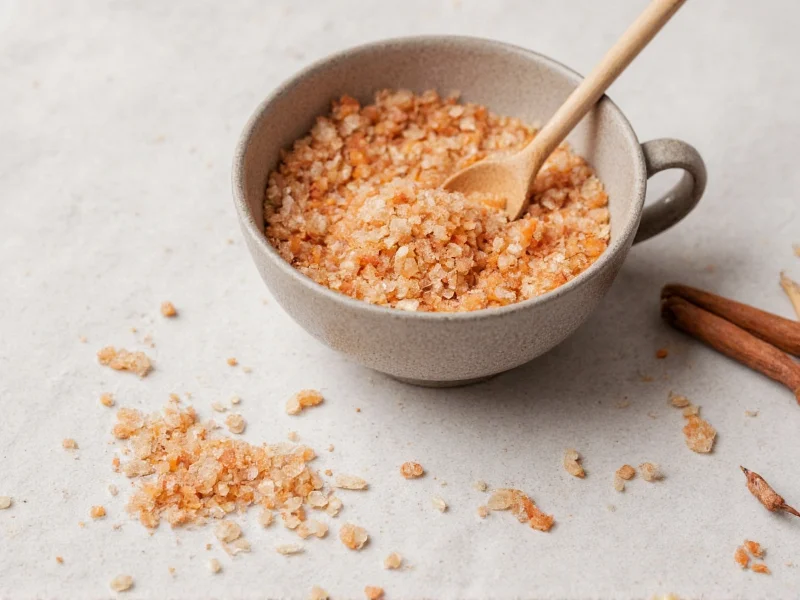Understanding the distinction between salt and spices matters for both culinary precision and scientific accuracy. Many home cooks and even professional chefs casually refer to salt as a spice, creating widespread confusion about basic food classification. This misconception affects recipe development, food science education, and proper seasoning techniques.
Defining Culinary Terms: Spices Versus Seasonings
The culinary world categorizes flavor enhancers into distinct groups. Spices specifically refer to dried plant parts—such as seeds (cumin), bark (cinnamon), roots (ginger), or flower buds (cloves)—used to flavor food. These originate from tropical plants and often contain complex aromatic compounds.
Seasonings represent a broader category that includes spices plus other flavoring agents like herbs, acids, and salt. This is where confusion typically arises. Salt functions as a seasoning but doesn't meet the botanical definition of a spice because it lacks plant origin.
| Characteristic | Salt | True Spices |
|---|---|---|
| Origin | Mineral (sodium chloride) | Plant parts (seeds, bark, roots) |
| Chemical Composition | NaCl compound | Complex organic compounds |
| Primary Function | Enhances existing flavors | Adds distinctive new flavors |
| Harvest Method | Mined or evaporated | Cultivated and processed |
Why Salt Doesn't Qualify as a Spice
The fundamental reason salt isn't a spice lies in its chemical and geological origin. Spices derive from specific plant components that contain volatile oils and compounds responsible for their distinctive flavors and aromas. Salt, however, forms through geological processes as sodium chloride crystals.
Food scientists and culinary professionals maintain this distinction because:
- Salt enhances existing flavors rather than contributing its own complex flavor profile
- It functions chemically different in food preparation (affecting protein structures, fermentation, etc.)
- Historical classification separates mineral-based flavorants from plant-derived ones
Common Misconceptions About Salt Classification
The confusion between salt and spices stems from several factors. First, grocery stores typically group salt with spices in the same aisle. Second, many recipes list "salt and spices" together, implying similar categorization. Third, the term "spice rack" commonly holds salt alongside actual spices.
Understanding is salt considered a spice in culinary terms requires recognizing practical usage versus technical classification. While functionally similar in the kitchen, their scientific distinctions remain important for food science, nutrition, and precise recipe development.
The Unique Role of Salt in Cooking
Salt performs functions that true spices cannot replicate. It suppresses bitterness while enhancing sweetness and umami. In baking, salt controls yeast activity. In preservation, it creates environments hostile to bacteria. These properties stem from its ionic nature rather than aromatic compounds found in spices.
When exploring the difference between salt and spices, consider how salt works at a molecular level. It dissolves completely in water, affecting food's chemical structure, while spices typically remain particulate and release flavors gradually through oil solubility.
Practical Implications for Home Cooks
Recognizing that salt is not a spice but a seasoning improves cooking technique. Understanding salt's unique properties helps with:
- Proper seasoning timing (adding salt early versus spices later)
- Balancing flavors in complex dishes
- Adjusting recipes for dietary restrictions
- Understanding why salt substitutes behave differently
Chefs who grasp why salt is not a spice develop better intuition about flavor development. They recognize salt as the foundation upon which other seasonings build, rather than just another ingredient in the spice collection.
Historical Context of Salt Classification
Historically, salt held such value it was sometimes called "white gold" and used as currency. Ancient trade routes existed specifically for salt transport, separate from spice routes. This historical separation reflects the fundamental distinction between mineral resources and agricultural products.
The question is salt a seasoning or spice has evolved with culinary science. While traditional cooking might blur these lines, modern food science maintains clear distinctions that help us understand flavor chemistry more precisely.











 浙公网安备
33010002000092号
浙公网安备
33010002000092号 浙B2-20120091-4
浙B2-20120091-4